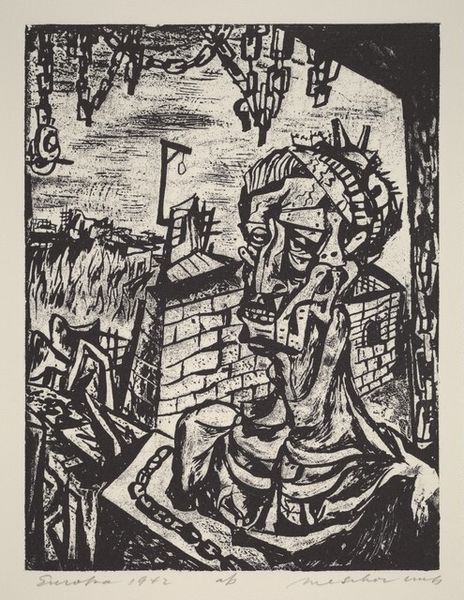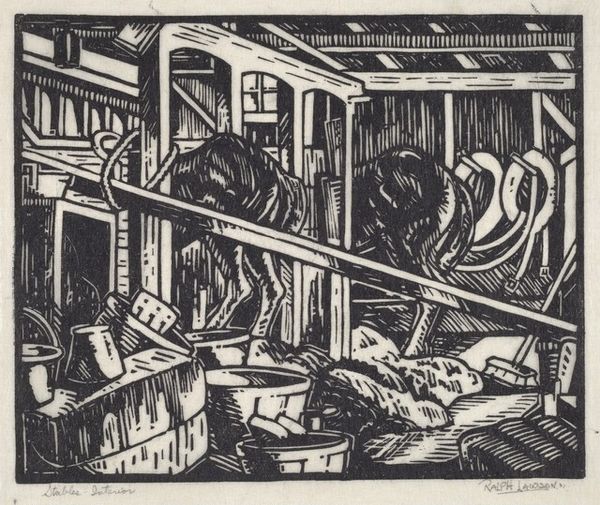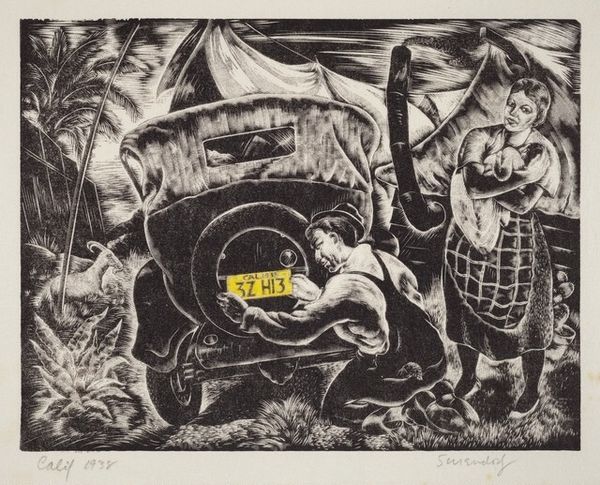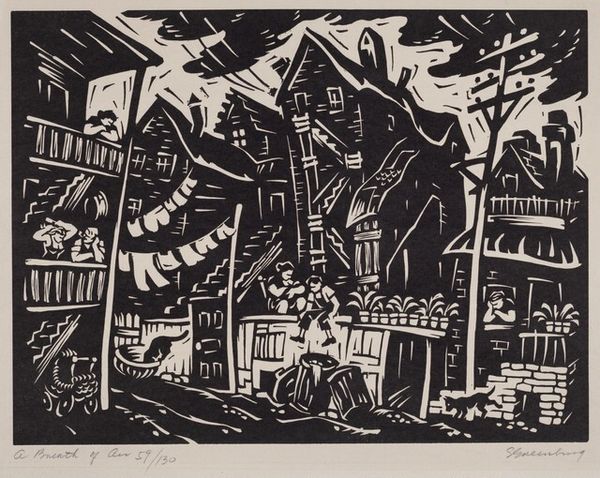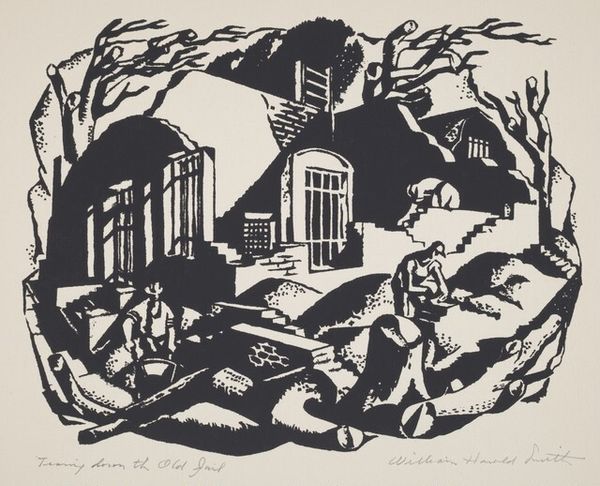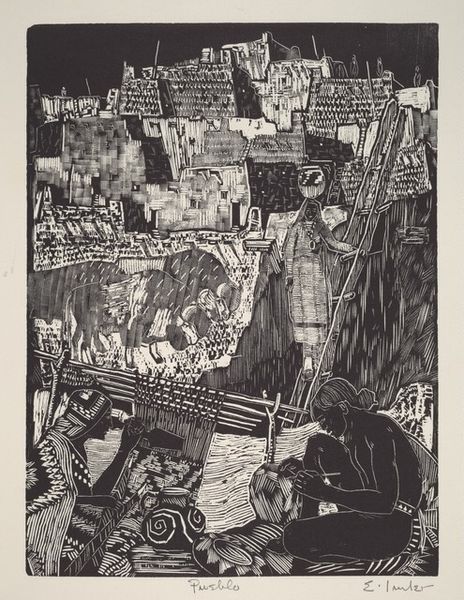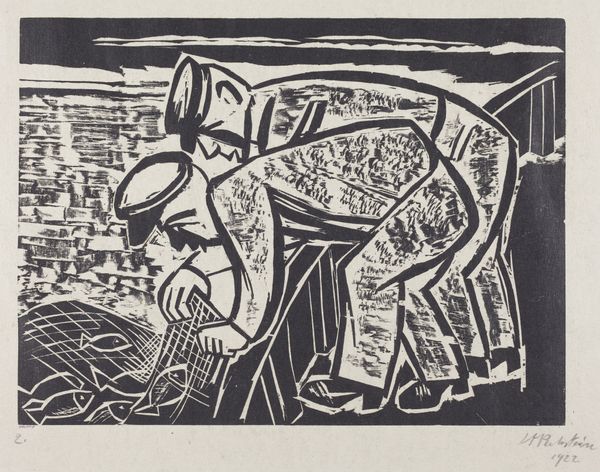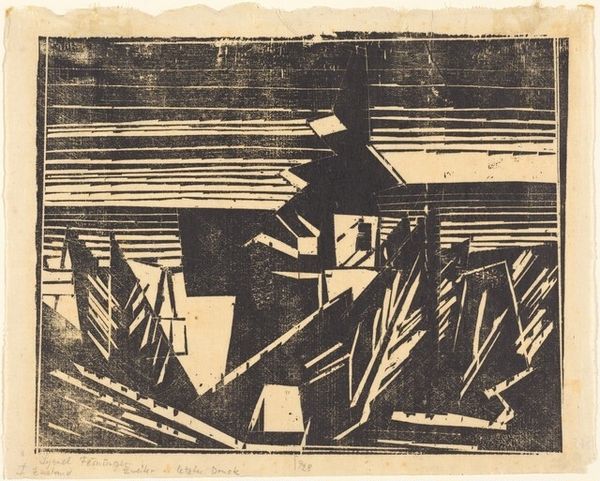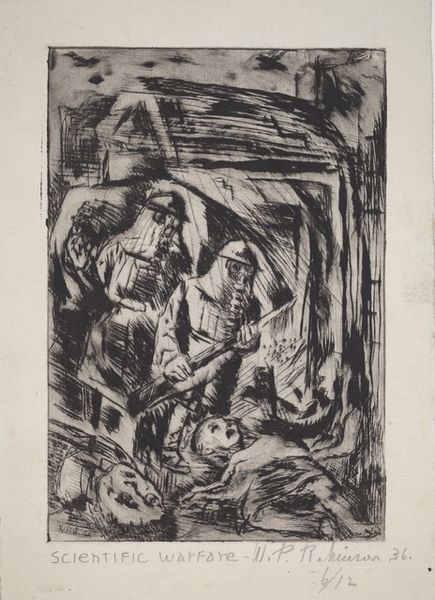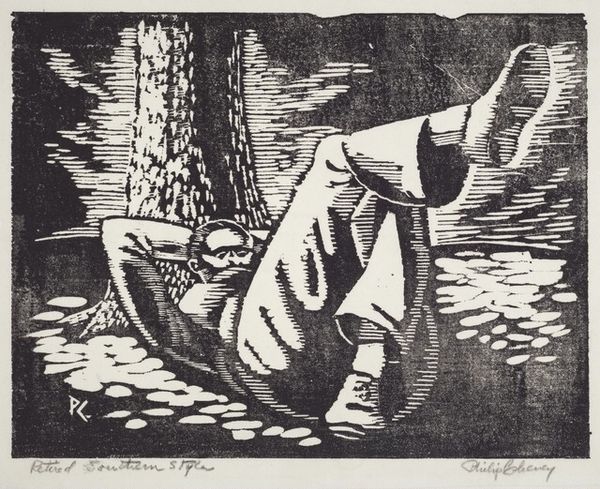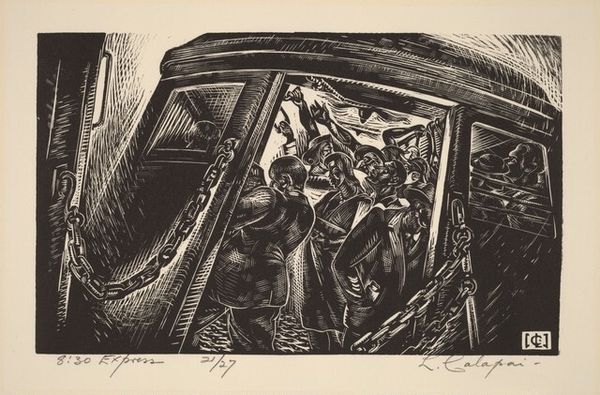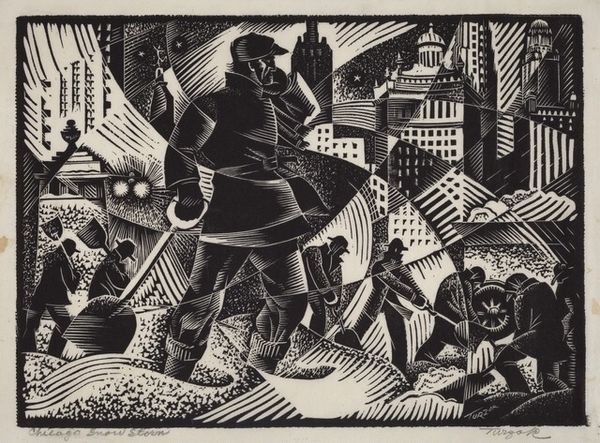
print, relief-print, woodcut
#
narrative-art
# print
#
relief-print
#
landscape
#
woodcut
#
realism
Dimensions: image: 152 x 203 mm sheet: 222 x 286 mm
Copyright: National Gallery of Art: CC0 1.0
Editor: Right, next up we have "Flood" by Edgar Imler, created sometime between 1935 and 1943. It's a woodcut print, and it depicts a family escaping a flooded house. The high contrast and chaotic composition create a real sense of urgency. What strikes you most about this piece? Curator: The raw, visceral energy of this woodcut just grabs me. The black and white are so stark, aren't they? It's a bit like a silent film, full of drama. Imler has simplified the forms, almost to the point of abstraction, but it intensifies the emotional punch. Think about it: a family, their dog, possessions clutched, all navigating a world turned upside down. Do you get a sense of resilience amidst the chaos? Editor: Absolutely. There’s a desperation, but also a sense of determination in their faces. The way the house is tilting – it makes you feel off-balance just looking at it! Curator: Exactly! And look at those jagged lines depicting the water, it’s not gently flowing; it's a destructive force. Imler was working during a time of great social upheaval, the Depression, Dust Bowl migrations... Maybe this flood speaks to broader anxieties? Does the simplicity almost give it a universal feel, do you think? Editor: It does. It makes me wonder about the stories behind each artwork; about how the circumstances of their creation contribute to the emotion in a piece. Curator: Indeed. Art whispers and shouts to us through time. I think that reflecting on that can sometimes amplify how we interpret it ourselves. Editor: Absolutely. "Flood" is a stark and compelling artwork, blending anxiety and resilience with incredible power. Thanks for the insights!
Comments
No comments
Be the first to comment and join the conversation on the ultimate creative platform.
